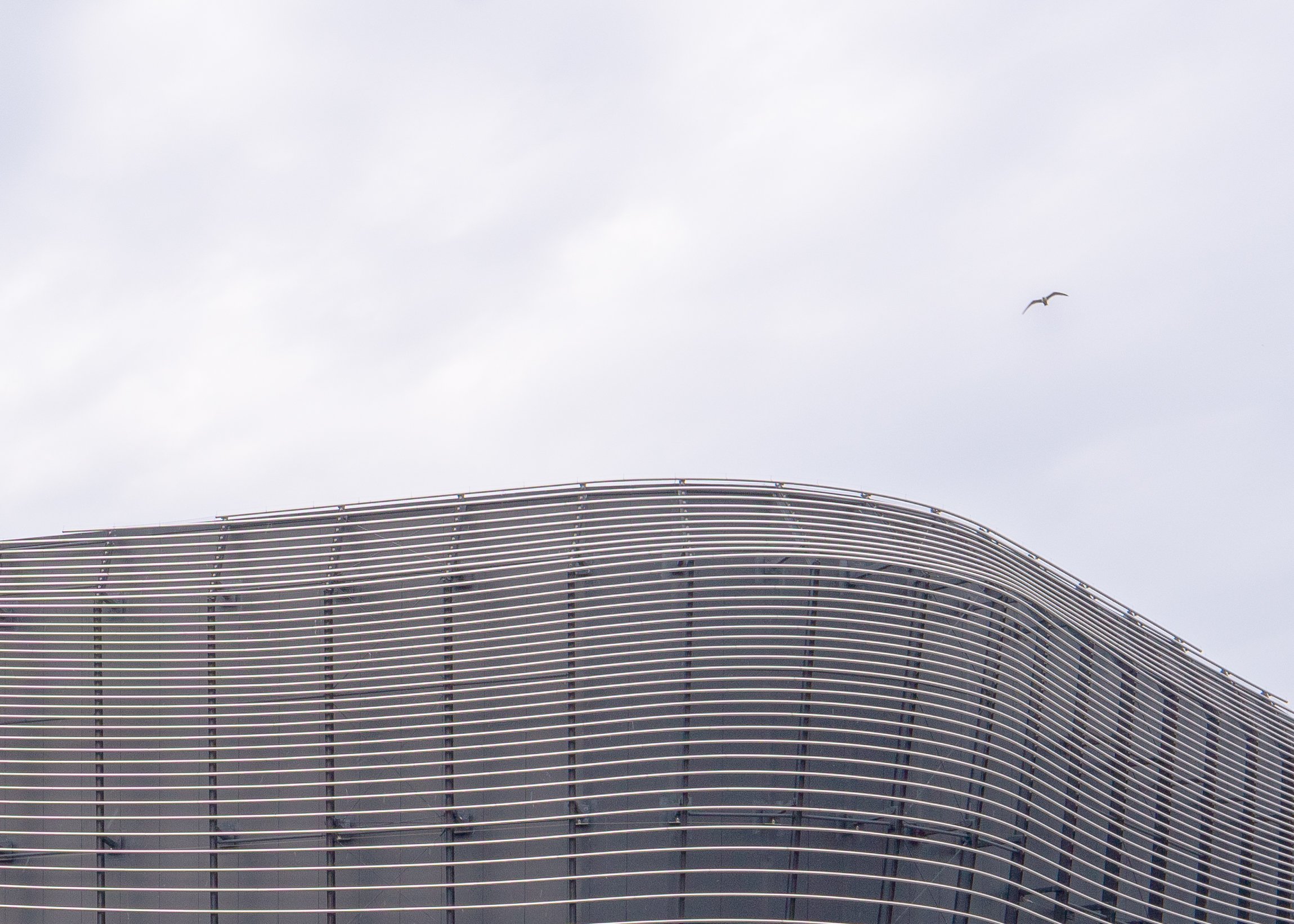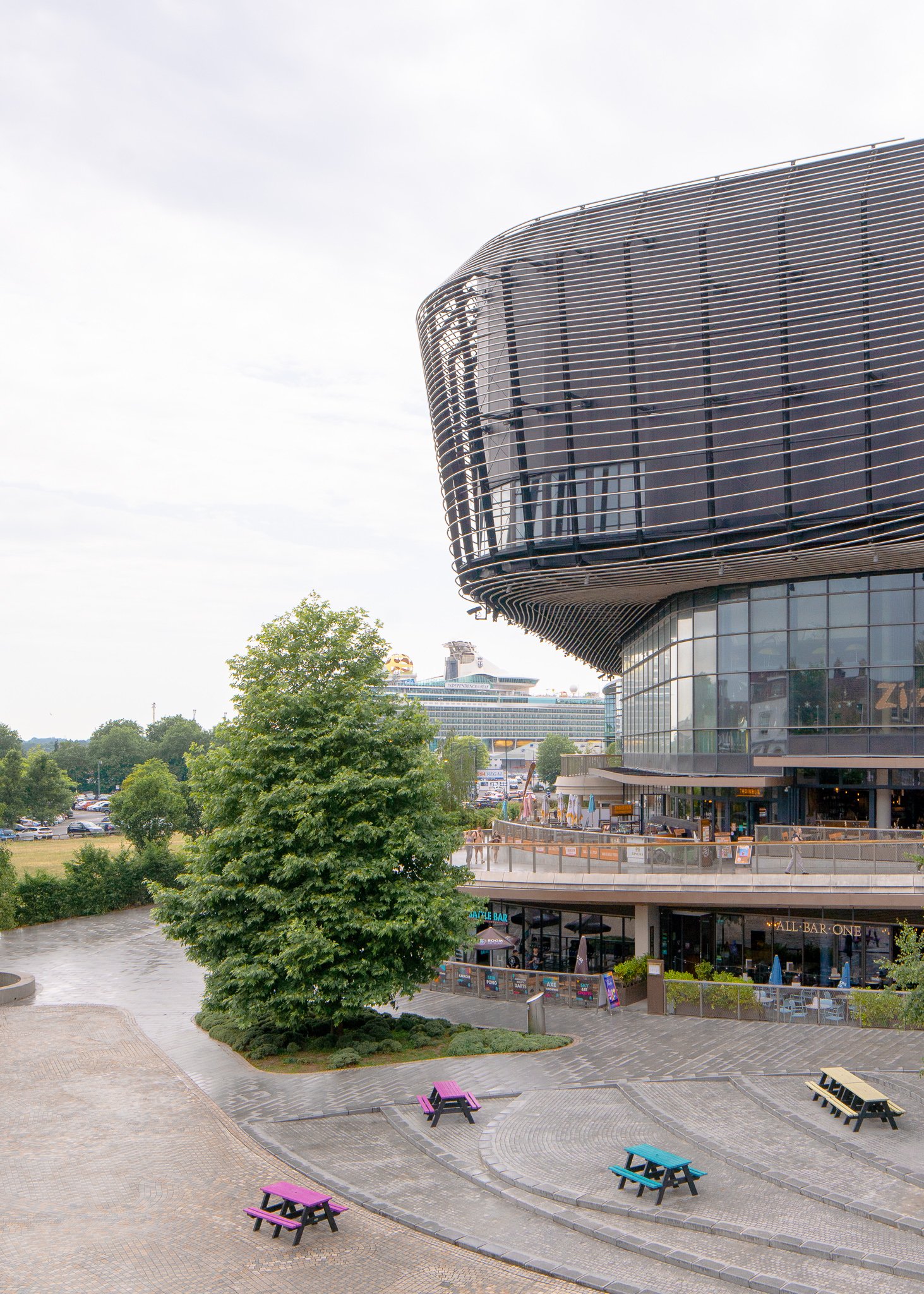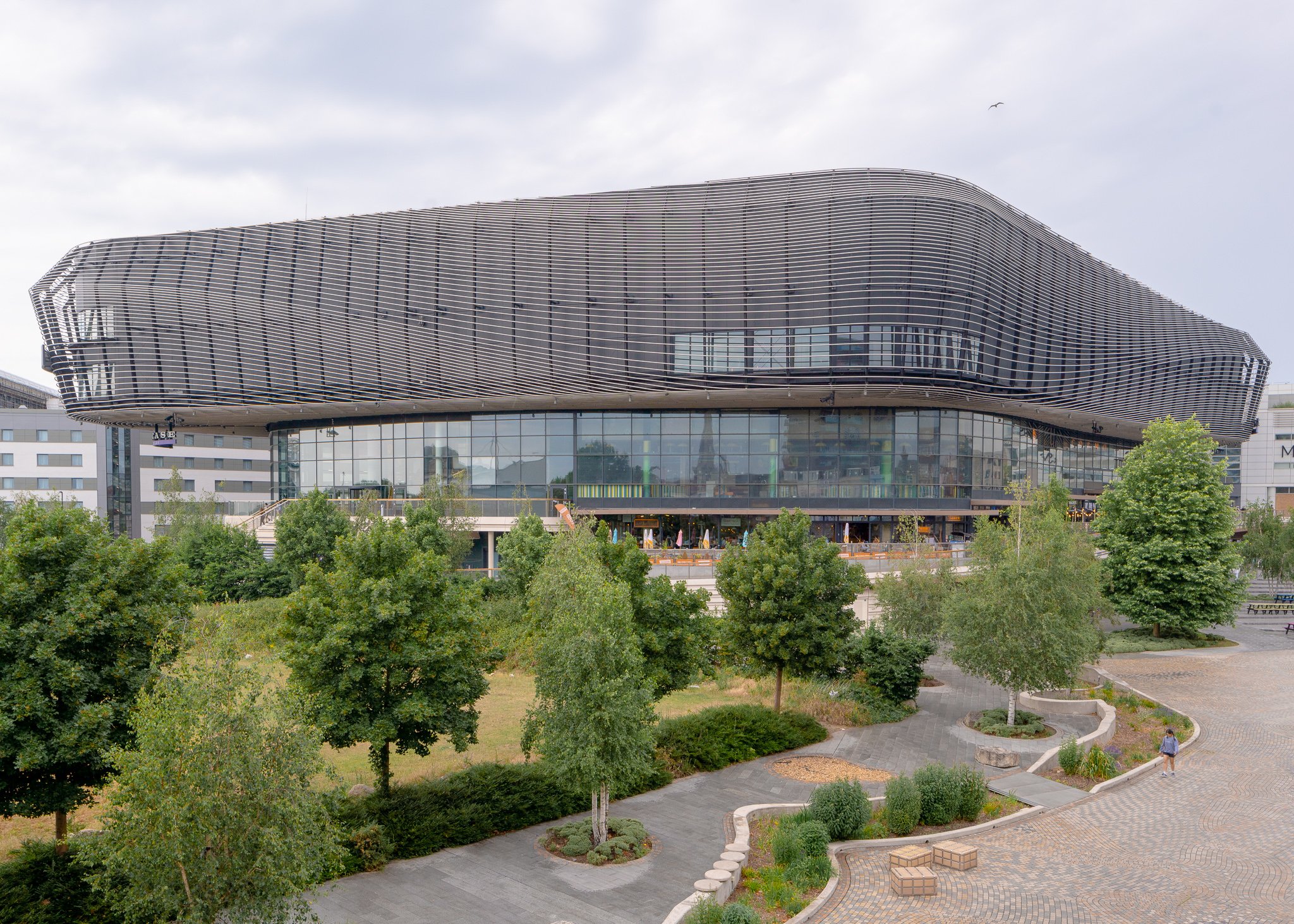
Southampton often reveals its layers slowly, through texture, tone, and the quiet defiance of buildings that refuse to be overlooked. During a recent visit, my gaze was drawn to Watermark @Westquay, completed in 2017. It wasn’t just its scale or programmatic boldness that caught my attention; it was its form, particularly the upper geometry. There was something striking about its rooftop profile, a sculptural gesture that seemed to speak across decades.
Architecture rarely whispers. When it’s done well, it asserts presence without demanding attention. The Watermark does exactly that. Its upper form invites inquiry. Why this shape? Why here? It’s a reminder that in architecture, few things are accidental. Every void, projection, and curve is a response, a dialogue with site, history, brief, and ambition.
The corner it occupies is heavy with memory. Long before the Watermark brought leisure, cinema, and dining to this part of the city, it was the site of the Pirelli cable factory, a place where industry once thrived. Through two world wars and well into the twentieth century, this was a place of purpose. Cables manufactured here carried power across Britain, connecting infrastructure and fueling progress. The factory eventually closed in 1990 after suffering structural failures. But the memory of it lingers, invisible yet palpable.
To walk this site now is to engage with a form of architectural continuity. Watermark doesn’t erase what came before, it reinterprets it. The jagged rooftop geometry feels almost like an echo of gantries or industrial chimneys, abstracted into contemporary design language. It rises as a new skyline marker for the city, unapologetically modern but not unmoored.
There’s a boldness to the building, not just in its scale or materiality, but in its willingness to be present. It doesn’t try to blend in or camouflage itself. Instead, it leans into contrast, glass against stone, elevation against grounded history. And in doing so, it reveals something about what it means to build in a city shaped by movement, trade, and transformation.
Watermark is more than a leisure complex. It’s a conversation, a testament to architectural storytelling, and a structure that gestures back even as it looks forward.
Architect: Harry E Hawker (1922)



